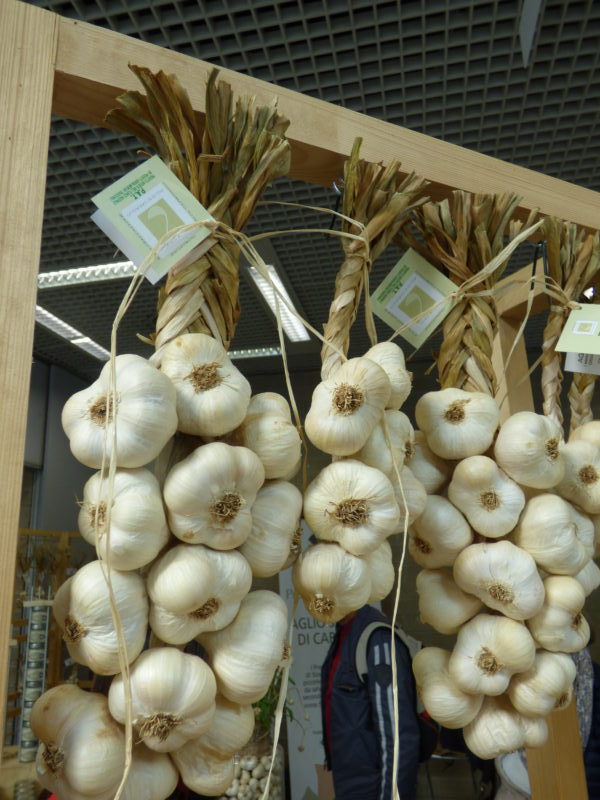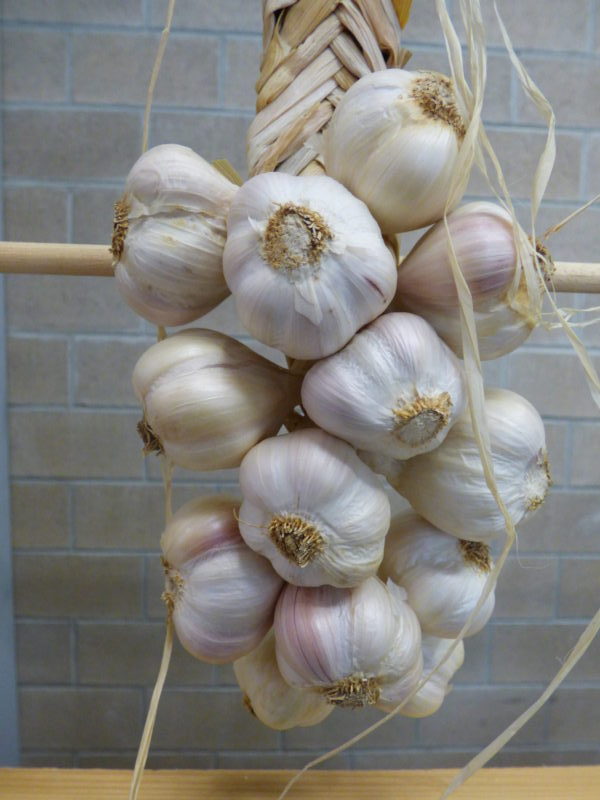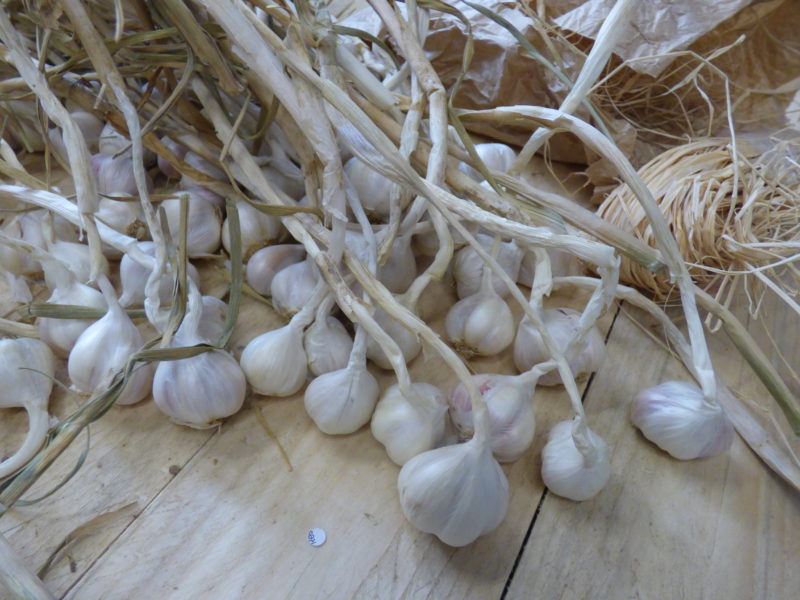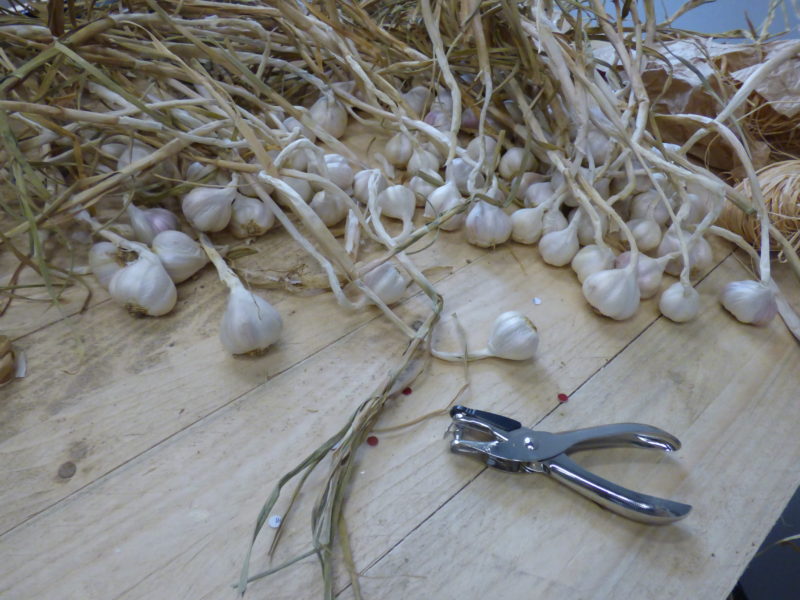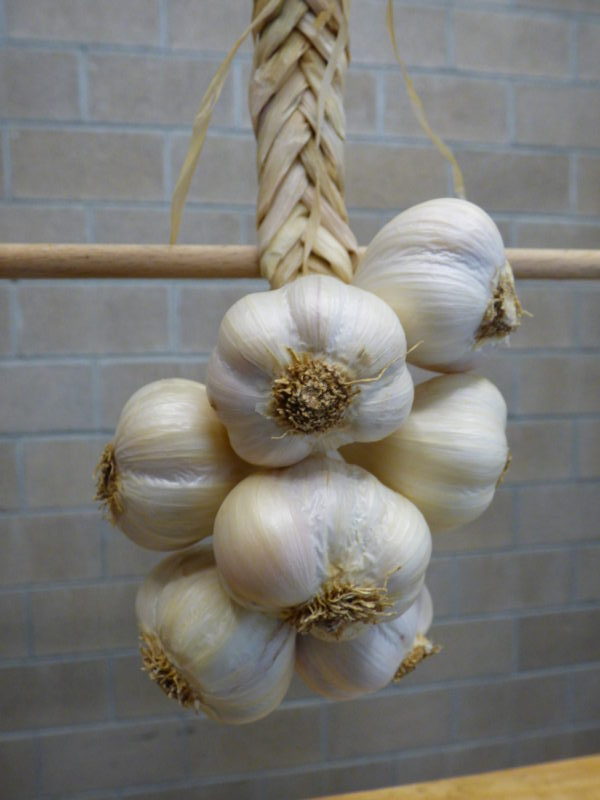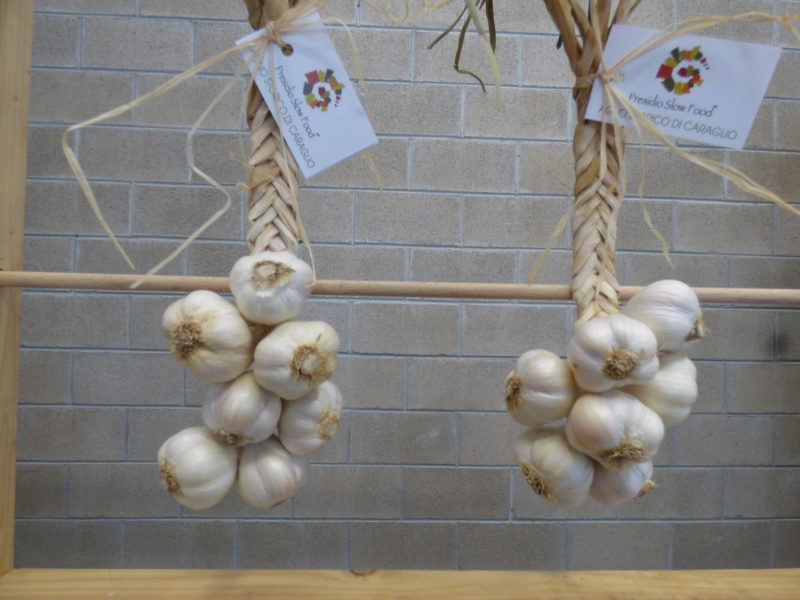
Caraglio Historical Garlic
This post is also available in:
 Italiano (Italian)
Italiano (Italian)
Winters are cold and snowy, while springs and summers are cool and breezy, all thanks to the proximity to the Alps, and the soil almost totally devoid of sulphates: that’s the very territory of Caraglio, in the foothills of Valle Grana; a place particularly suitable for the cultivation of garlic – a vital ingredient for numberless traditional Piedmont recipes.
In Caraglio, a particular ecotype of garlic has developed over time, favoured by such ideal microclimate; it features a delicate taste, a pleasant aroma, it’s easy to digest – even when eaten raw, and it’s rich of anti-inflammatory substances.
Its cultivation used to be limited to family gardens and, in case of excessive production, it would be sold to greengrocers. In recent times, this type of garlic risked extinction, but thanks to a local family, who had preserved the authentic seeds, the cultivation of this ecotype was resumed five years ago, strictly following the traditional farming techniques including manual processing, no chemical synthesis, soil exclusively fertilized with bovine manure (possibly coming from Castelmagno farms), minimum three-year crop rotation with legumes (especially lentils and beans), cereals (such as “ottofile” corn and “barbarià”, a traditional association of rye and wheat, used in the past to obtain a particular kind of flour), potatoes, cabbage, and more.
Although not all the farmers involved in the cultivation of this particular type of garlic are “organically” certified, everybody sticks to biological and modern techniques.
Nicknamed “Caraglio white gold”, this ancient ecotype has become a Slow Food Presidium; its producers have gathered into a consortium (“Consorzio dell’Aglio Storico di Caraglio”), to encourage cultivation even in forgotten and unused areas, constantly involving more and more new farmers.
The Caraglio Historic Garlic is rustic and vigorous, has a small bulb (0.78-2.36 inches) with tapered segments showing deep red streaks. It is sown in autumn and harvested on June 24, St. John’s Day.
After harvesting, the bulbs are placed to dry on racks (in a ventilated, dry, and bright place not in direct sunlight), for at least 40 days, then they are packaged, strictly by hand, and are ready to be enjoyed.
Its long-lasting taste makes Caraglio Historical Garlic an ideal ingredient for some typical recipes like “soma d’aj” (bruschetta with homemade bread, garlic, extra virgin olive oil and salt), “bagna cauda” (garlic sauce and anchovies), and “bagnet verd” (green sauce for meat).
Some producers of the Historical Garlic of Caraglio:
Azienda Agricola Ceaglio Giuliana
via Regina Margherita 125, Bernezzo,
tel. (+39) 0171 82002, cell. (+39) 328 4882371
La Fattoria dell’Aglio
via Roma 1, Caraglio, tel. 0171619507, cell. 3355465920
laboratorio via Macagno 22, tel. (+39) 0171 618856, cell. (+39) 347 9095702, info@fattoriadellaglio.it
Azienda Agricola Biologica Cascina Rosa
località Bottonasco 28, Caraglio, tel. (+39) 0171 619741,
infocascinarosa@gmail.com
Azienda Agricola AG Farming
via Vallera Sottana 125, frazione Vallera, Caraglio,
tel. (+39) 0171 619004, cell. (+39) 333 6853399
Azienda Agricola Biologica Armando Ornella
via Bernezzo 133, Caraglio,
tel. (+39) 0171 618307, cell. (+39) 333 9375641,
ornella.armando@gmail.com
Azienda Agricola Ferrero Ornella
via Bottonasco 31, Caraglio,
cell. (+39) 380 5287921,
er.minio@libero.it
Azienda Agricola Alciati Chiara
via Dante Livio Bianco 24, Caraglio,
cell. (+39) 340 0587236
chiara.alciati@libero.it
Azienda agricola Morre Massimo
Cascina Rittanolo 28, 12023-Caraglio-CN,
cell. (+39) 339 7325769, (+39) 338 1186048
morre@agliodicaraglio.it
www.agliodicaraglio.it
This post is also available in:
 Italiano (Italian)
Italiano (Italian)
Contatti
Consorzio dell'Aglio di Caraglio, via Roma 138 - 12023 Caraglio (CN)(CN)
Referente dei produttori del Presidio: Aurelio Agnese, cell. (+39) 3479095702
info@fattoriadellaglio.it
